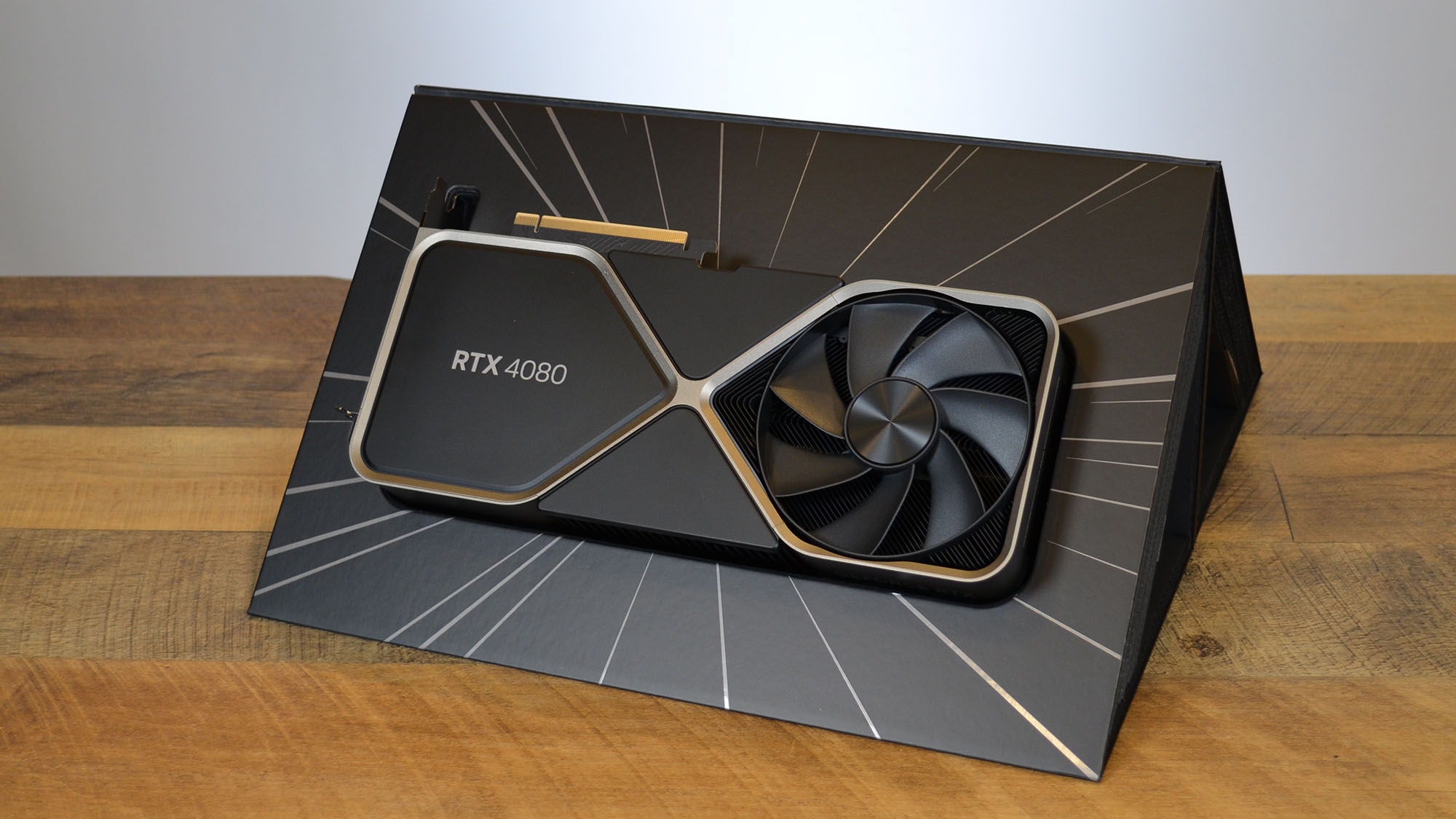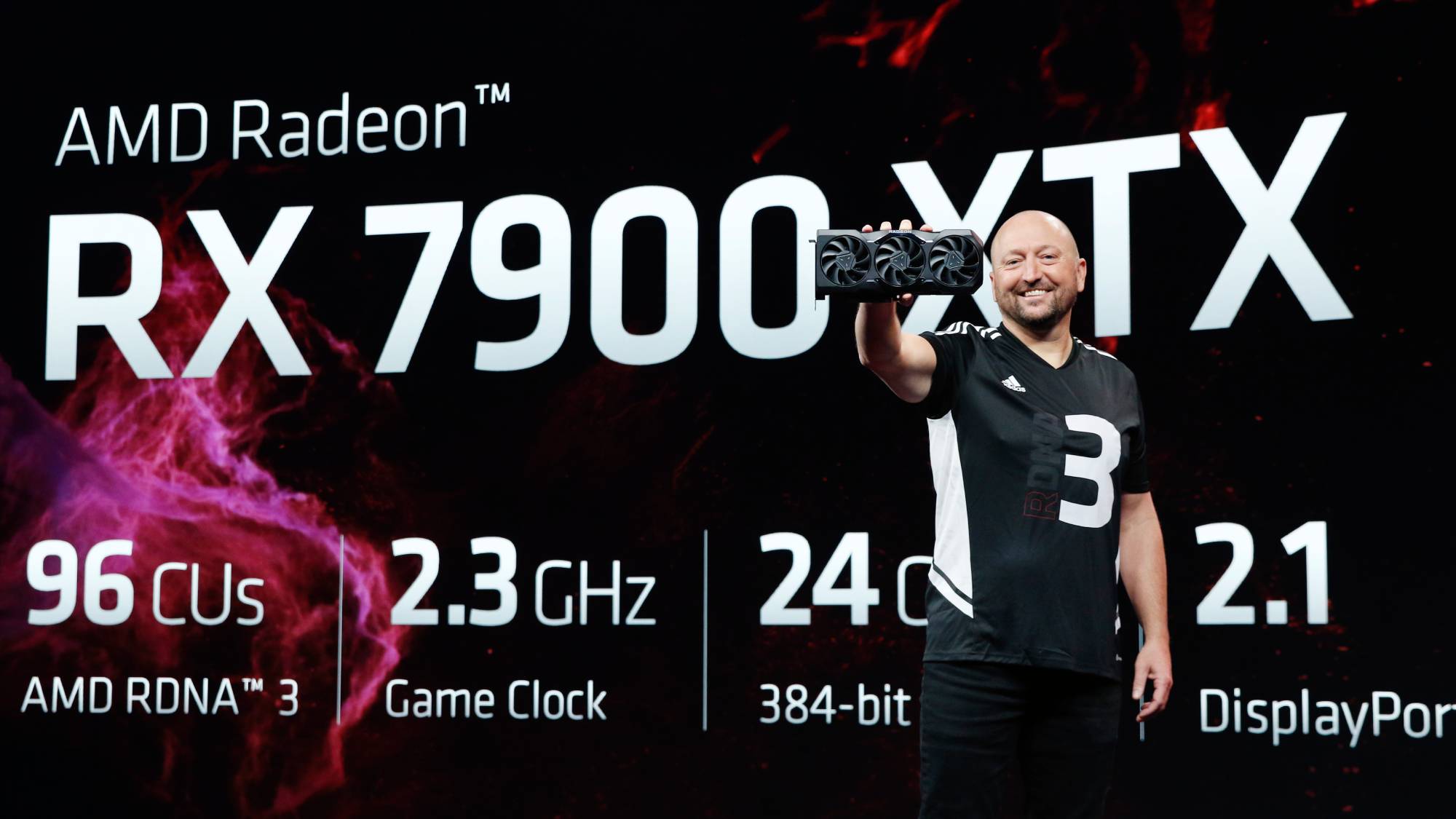The RTX 4080 launch was an avoidable mess, but Nvidia can still turn things around
Nvidia can save the RTX 4080 with an easy fix, but it will be painful

I did not rate the Nvidia RTX 4080 too highly, despite the fact that it is one of the best graphics cards ever made.
In terms of performance, the Nvidia RTX GeForce 4080 is unquestionably the second-best graphics card Nvidia has ever produced, trailing the Nvidia GeForce RTX 4090 by a reasonable margin. It has advanced new features that all play directly to Nvidia's strengths in terms of hardware-accelerated machine learning, ray tracing, and more.
It even has, as Nvidia quipped earlier this week, better (or at least more frequently updated) drivers that consistently improve performance and fix hiccups that can hold a graphics card as powerful as an Nvidia Lovelace GPU back from reaching its full potential.
But somewhere along the way, whether it was a marketing decision that outran engineering or there is some yet-to-be-uncovered, behind-the-scenes supply-chain drama about supply chains that could explain what's happened, the Nvidia RTX 4080 got shanked, and that's truly a shame.
In the end, though, Nvidia has only itself to blame, and I really hope it learns its lesson before it moves on to the Lovelace cards that most of us will be looking to buy in the new year, even if it can't bring itself to redeem the RTX 4080.
The RTX 4080 didn't stumble on its own, it was pushed

The Nvidia RTX 4080 is an incredibly powerful graphics card that can play the best PC games at incredibly high frame rates using advanced technologies that only Nvidia seems able to master. Better still, it is also an incredibly powerful creative accelerator for all kinds of content creation, from video editing to 3D modeling and game development.
The fact that the AMD RX 7900 XTX edges it out in rasterization performance, which is what 97% of all PC games rely on, isn't even a fatal blow to the card (as much as it is a credit to the team at AMD).
Sign up for breaking news, reviews, opinion, top tech deals, and more.
In my RX 7900 XTX review, I note that AMD's FSR 2.0 delivers a fantastic 4K gaming experience on the highest setting with ray tracing enabled, something that the last generation of AMD graphics cards (including its previous flagship, the RX 6950 XT) really wasn't able to match.
I also made a point to say that Nvidia DLSS 3 absolutely smokes FSR 2.0. Where AMD FSR 2.0 might net you 25 extra frames per second on quality settings or 50 more frames per second (or greater) on ultra-performance mode, DLSS 3 with whole-frame generation, rather than the slower per-pixel upscaling of earlier tech, can get you twice or even three times that performance increase in the games that feature it right now.
It's impressive stuff. Nvidia wasn't lying when it said DLSS would net you more than 100fps in Cyberpunk 2077 with every setting – including ray tracing – turned up to 11. Granted, that was on the RTX 4090 (at least in our tests), but on the 4080, you are still seeing the high 80s in terms of fps, which is twice what you'd get with just native-resolution rendering.
The problem is that this isn't really the RTX 4080, it's what the RTX 4080 Ti should have been, while the "unlaunched" RTX 4080 12GB variant should have been the proper RTX 4080. Nvidia can't undo that terrible marketing decision, but it can make a much-needed change in one area that is still firmly within its control: pricing.
Read the room, Nvidia

The problem for Nvidia is that it guessed that gamers would still jump at the chance to have an RTX 4080 the second it launched, whatever its ultimate price. In fairness, Nvidia has spent the past two years watching every single one of its graphics cards sell out the second stock was put online, so you can hardly blame it for thinking that the same might be true for the RTX 4080, a card that should have garnered far more interest than Nvidia's flagship RTX 4090.
Instead, the RTX 4090 sold out almost immediately, as did the RX 7900 XTX, and you can still find stock of the RTX 4080 in the UK, while scalpers in the US can't sell their ill-gotten RTX 4080 cards even at MSRP. Some retailers are reportedly not letting them return those cards, either, notes Moore's Law is Dead, meaning that they suspect they won't be able to resell them.
All of this, honestly, comes down to the price of the RTX 4080. It is 20% more expensive than the RX 7900 XTX and only 25% cheaper than the RTX 4090, and, as I noted in my review, if you are going to drop $1,200 on a graphics card, it makes no sense to settle for the third best graphics card overall, especially when the RX 7900 XTX stacks up pretty well against the RTX 4090.
There may have been a time when the $200 price difference between the RX 7900 XTX and the RTX 4080 wouldn't have bothered too many people, but as we head into 2023 with an abundance of inflation and recessionary signals, even big spenders are going to be more conscious of the price of these GPUs. Nvidia seems to have missed that signal, and it has cost them a lot in terms of sales.
Of course, Nvidia isn't the biggest manufacturer of RTX 4080 graphics cards, it's third-party partners, and whether Nvidia likes it or not, they are going to start selling their graphics cards for less in order to boost sales. The longer Nvidia keeps the RTX 4080 at its current MSRP, the longer it is really delaying the inevitable.
Can Nvidia recover?
The real question now is whether Nvidia can recover the RTX 4080 in the wake of the RX 7900 XTX's success. I believe it can, but it needs to slash the price of the RTX 4080, and it needs to do so as soon as possible. The longer the RTX 4080 stays at its current price point, the more AMD is going to have the chance to get its cards into the hands of customers.
This is a zero-sum game since any customer who buys an RX 7900 XTX is not going to then turn around and buy an RTX 4080 a few months later. Once those customers are lost, they are likely lost for another couple of generations.
Retailers have already sold out their launch inventory of the AMD RX 7900 XTX and 7900 XTs. Nvidia is almost certainly going to be able to restock retailer's inventories first, and after scalpers got burned by the 4080 the first time around, they aren't likely to make a run on these cards for a second time.
Cut the price of the RTX 4080 to match the RX 7900 XTX and the RTX 4080 will fly off the shelves as fast as the RX 7900 XTX and RTX 4090 did. But doing so will require Nvidia to actually humble itself, which might be the biggest challenge for the dominant player in the GPU market yet.
If nothing else, we hope Nvidia has taken the lesson to heart when it releases the next round of graphics cards next year and prices its mainstream GPUs at a price point that the rest of us can actually afford. If it doesn't, Nvidia could see its market position erode as fast as Intel's did when it similarly took its dominance over AMD for granted.

John (He/Him) is the Components Editor here at TechRadar and he is also a programmer, gamer, activist, and Brooklyn College alum currently living in Brooklyn, NY.
Named by the CTA as a CES 2020 Media Trailblazer for his science and technology reporting, John specializes in all areas of computer science, including industry news, hardware reviews, PC gaming, as well as general science writing and the social impact of the tech industry.
You can find him online on Bluesky @johnloeffler.bsky.social